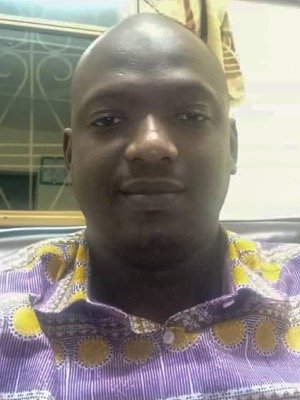Non-formal education: a viable alternative for African children
Today, June 16, marks the celebration of the Day of the African Child
On the Day of the African Child, ADEA shares its efforts in promoting non-formal education to ensure no child is left behind.

This is the fifth blog post published in 2018 as part of the collaborative effort started in 2017 between the Association for the Development of Education in Africa (ADEA) and the Global Partnership for Education (GPE).
In commemoration of the students massacred by the apartheid regime on June 16, 1976 in Soweto, South Africa, for demonstrating against their inferior education and demanding respect for their right to instruction in their own language, the African Union (AU) has observed the Day of the African Child (DAC) every year since 1991.
The right to participate: Let children be seen and heard
This year’s theme is “The right to participate: Let children be seen and heard.” The participation of children is one of the fundamental principles of the Convention on the Rights of the Child and the African Charter on the Rights and Welfare of the Child, Article 7 of which states that “every child who is capable of communicating his or her own views shall be assured the right to express his opinions freely in all matters and to disseminate his opinions subject to such restrictions as are prescribed by laws.”
For African countries concerned about the welfare of their children and thus the future of the continent, this is a time to pause and assess the situation with respect to the violation of children’s rights and to adopt appropriate measures to further ensure their welfare. The importance of addressing the loss of the right to education faced by children is heightened by the variety of consequences of this situation such as unemployment, delinquency, insecurity, street children and in turn prostitution, as well as child soldiers.
The DAC theme provides an opportunity to reflect once again on the credible alternatives to be implemented to achieve holistic education that places children at the center of learning. Non-formal education has rightly developed several education alternatives that respond to this imperative with, in particular, “the pedagogy of text” that makes students central to the learning process by providing them with the tools necessary to analyze and understand the objects and life that surround them.
Urgent measures are required in sub-Saharan Africa
Despite the tremendous efforts made for decades to achieve education for all, the challenge remains significant. According to UNESCO’s Institute for Statistics (UIS) data published in February 2018, roughly 260 million children, adolescents, and young people worldwide (one in five) are not enrolled in school—a figure that has remained virtually unchanged over the past five years. Of all the regions, sub-Saharan Africa has the highest education exclusion rates. More than one-fifth of children roughly 6 to 11 years of age are not enrolled in school, followed by one-third of children approximately 12 to 14 years of age. According to UIS data, close to 60% of young people roughly 15 to 17 years of age are not enrolled in school.
If urgent measures are not taken, the situation will worsen as the region is facing growing demand for education owing to the steady increase in its school-age population.
ADEA’s strategic role in the promotion of non-formal education
In light of this, several organizations have developed initiatives to provide inclusive and holistic education. Of these, ADEA, through its Working Group on Non-Formal Education (WGNFE), has started a series of discussions that can help policymakers focus on children who are not enrolled in school, have stopped attending school, or have been left behind—in other words, those who have not been included in the Education for All (EFA) movement. Examples include:
- Synergies between formal education subsystems and different types of learning in the Koranic education centers in Guinea, Mali, and Niger. This research has led to specific proposals to provide greater access to education for disadvantaged groups and improved equity in access to quality education that take into account the socioeconomic situations of students, among them children from the most vulnerable groups. One key recommendation was the inclusion of Koranic homes and schools in education development policies and programs.
- The WGNFE Zankey Faba program, in collaboration with 5 civil society organizations (Association for the Promotion of Non-Formal Education (APNFE), Andal and Pinal in Burkina Faso, ALPHADEV in Senegal, RONJECT Group in Ghana, and MALI-ENJEUX in Mali) have documented and shared a number of good practices related to the development of basic skills needed for better social and vocational integration of young Africans who have stopped attending school or are not enrolled in school and are in vulnerable situations.
- The initiative to measure the effectiveness of the right to education, developed by WGNFE in partnership with APNFE, is commendable as it provides education stakeholders and policymakers with a sound argument for greater investment in response to the basic requirements of domestic and international law.
Appeal to African governments and policymakers
However, despite the key role of non-formal education in education programs in African countries, the share of budget allocated to this subsector remains paltry, as it rarely exceeds 1% of the education budget.
This situation calls for urgent intervention in support of non-formal education by allocating more financial resources to it so that it can fully play its role as a catalyst for the achievement of SDG 4.

